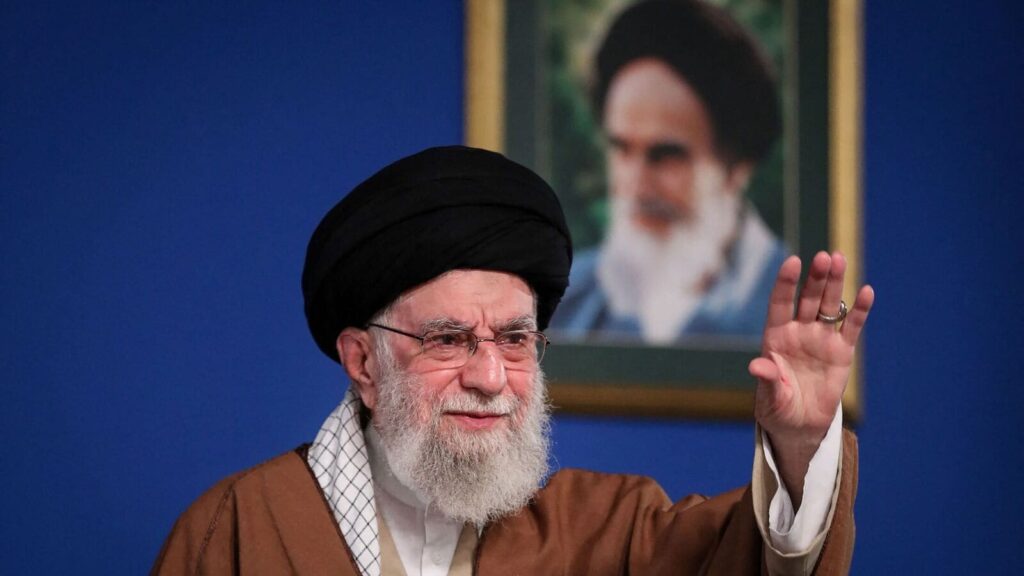US President Donald Trump hinted at a “regime change” in Iran just hours after Defence Secretary Pete Hegseth said on Sunday, “This mission [US attacking Iran’s nuclear sites] was not and has not been about regime change.”
The idea of killing Supreme Leader Ayatollah Ali Khamenei also surfaced during the Iran-Israel conflict. It was said that Trump had vetoed an Israeli plan to kill the Iranian Supreme Leader, but the US President later claimed Khamenei was an “easy target” but would not be killed, “at least for now”.
This left the door open for a discussion of what exactly President Trump meant by “regime change.”
Meanwhile, Israel, which is in conflict with Iran, has not ruled out killing Khamenei. Last week, Israel Defence Minister Israel Katz said of Khamenei: “This man absolutely should not continue to exist.”
What is a regime change?
Cambridge dictionary defines a ‘regime change’ as a complete change of government, especially one brought about by force.
Meanwhile, Britannica says a regime change refers to the overthrow of a government considered illegitimate by an external force and its replacement with a new government according to the ideas or interests promoted by that force.
Simply put, a change of regime means forming a new government.
When is a regime change possible in Iran?
In case of Iran, a regime change would require Israel or the US having a figure in mind to replace Khamenei and send troops to the country, Trita Parsi, executive vice president of the Quincy Institute in Washington, DC, told CNN.
A delay in choosing the new Supreme Leader could fuel another possibility for a regime change in Iran.
Iran’s ‘unique’ Islamic regime
Iran’s government is a unique hybrid system which has elements of a theocracy and a republic.
The Supreme Leader is at the top of Iran’s power structure. He is “the guardian jurist who is effectively Iran’s leader for life,” the Council on Foreign Relations explained. The president is the second-highest-ranking official in Iran.
Particularly, Khamenei, the 86-year-old cleric, has ruled Iran for more than 35 years as its highest authority, rising to power a decade after the 1979 Islamic Revolution overthrew a US-backed monarch.
So, what will happen if Iran’s Supreme Leader Ayatollah Ali Khamenei dies? Will his death lead to a regime change?
A new Supreme Leader will be chosen
Khamenei can be replaced by a new leader, but changing the regime itself is likely to trigger unrest in the Islamic Republic.
Choosing a leader on time may not necessarily lead to a “regime change” in Iran.
After US strikes in Iran, The New York Times, citing sources, reported that Khamenei has chosen three successors as his replacement in case military commanders die in Israeli strikes.
However, the US reportedly fears that Iran could get “somebody worse than Khamenei,” a source told the New York Post.
But what if the successor is not chosen on time?
Experts reportedly said that if the Supreme Leader is killed and the Guardian Council delays naming a successor, the risk of instability could grow.
Parsi from Quincy Institute in Washington also warned that “a possible outcome of Khamenei’s potential killing is total regime collapse.”
Risks of regime change in Iran | 2 points
One possible scenario is Iran’s various ethnic groups vying for power after Khamenei’s death.
Experts say that any attempt at regime change in Iran risks collapsing the state altogether – “a scenario that could splinter Iran and send shockwaves across the Middle East,” CNN reported.
Earlier, The Telegraph reported that Khamenei’s death could create a vacuum at the heart of the government that might trigger internal strife and civil unrest.
This is because Khamenei’s death is likely to create opportunities for Iran’s ethnic minority groups to rise up. Reports suggest that separatist groups who have long opposed the Islamic Republic may seek to take advantage of what they may see as an opportunity.
This could “potentially ignite local conflicts that could spiral into a broader civil war.”
If Iran’s regime falls, “there would be support for ethnic separatist groups by the Israelis, and perhaps the US,” Parsi said. This would lead to a situation where remnants of the state are going to be consumed with fighting separatists.
Another possibility is “military intervention”, which “rarely leads to democratisation,” Hamed Mousavi, associate professor of International Relations at the University of Tehran, told CNN.
“Military factions that could take over are “not going to be the type of regime that the US may have had in mind,” Parsi said.
“They are unlikely to seek diplomatic routes with Israel or the US, but could take a more hawkish approach that sees possession of a nuclear bomb as the only deterrent to more attacks,” Parsi said.
Source:https://www.livemint.com/news/world/is-a-regime-change-in-iran-possible-what-happens-if-supreme-leader-ayatollah-ali-khamenei-is-killed-11750753350074.html

